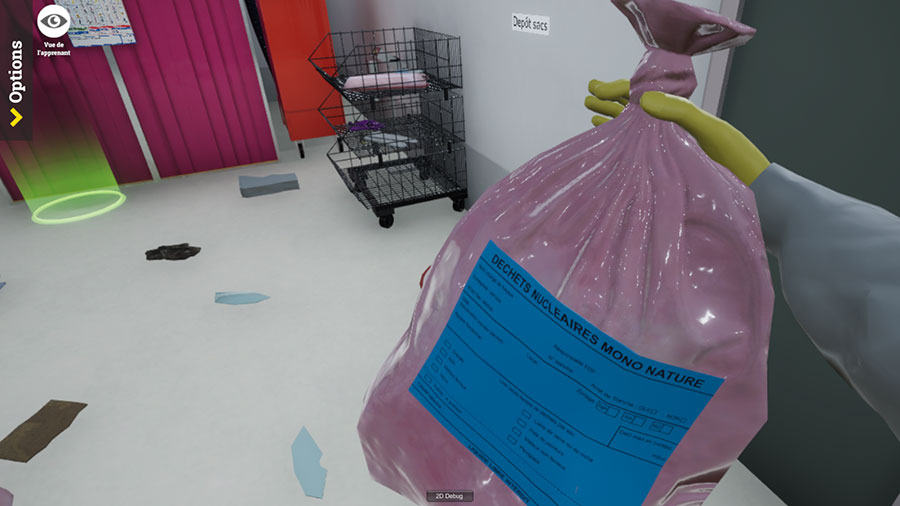A multi-site VR application
Orano DS, a leader in the nuclear industry, has collaborated with Audace to develop a multi-site virtual reality application designed to train operators in nuclear waste management. The application utilizes 3D modeling of various ORANO and EDF sites for which the training is created. The environments have been faithfully reproduced, each with its own specificities, to provide an immersive experience that closely resembles reality.
The main objective of this training is to educate operators to the various aspects of nuclear waste sorting, such as the use of different dose rate measurement devices, the collection and treatment of various waste types in a nuclear environment, and the labeling of storage containers. The training consists of several scenarios (missions), some of which are specific to each nuclear site.
A secure and guided immersive training experience.
Learners have complete freedom of movement and can navigate through the entire environment, including facilities and airlocks. They can choose their personal protective equipment (PPE), use various equipment, and their challenge is to complete their missions while adhering to safety rules, particularly those related to radiation risks. During the simulation, the trainer can trigger unexpected events to assess the learner’s response. These events may include a dose alarm, oxygen deficiency, a depressurization failure, the presence of metals in a waste bag, and more. This allows the learner to demonstrate their ability to handle unforeseen situations and react accordingly.
The actions and movements are recorded throughout the mission and then transcribed into a PDF file summarizing the journey. In this application, there is no specific evaluation phase; success is based on the learner’s ability to achieve the set objectives.
This VR training enables better training for Orano operators by allowing them to interact with the reality of the nuclear environment in a virtual setting. This allows them to make mistakes in a virtual environment without real consequences, which helps them learn faster and without any danger, enhancing retention and memory (as the consequences of the mistakes are experienced). This safe and pedagogical alternative also helps save financial, human, and logistical resources (there is no need to prepare a room with dummy waste for sorting or mobilize machinery for training purposes).

